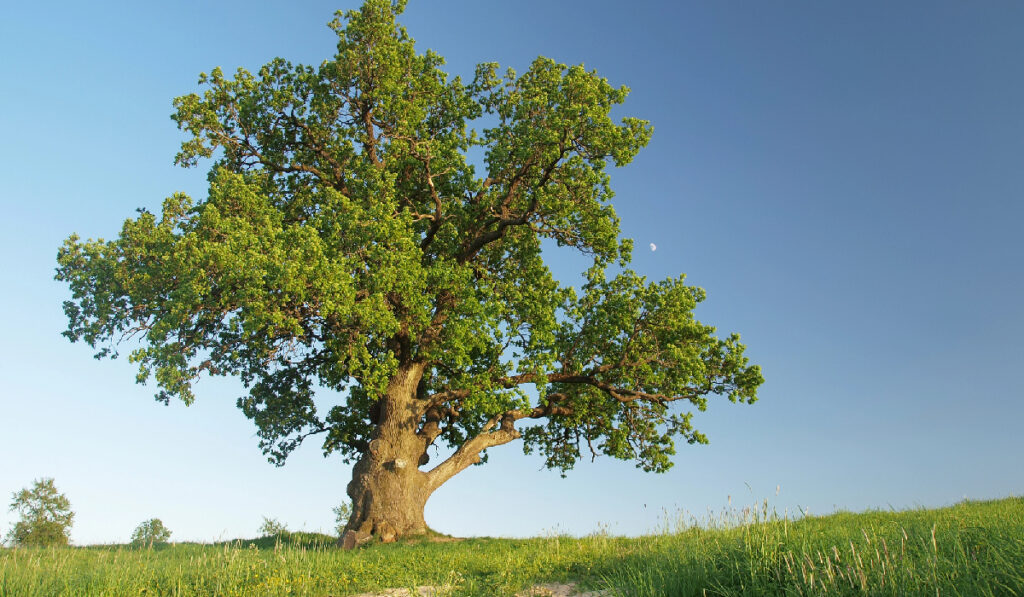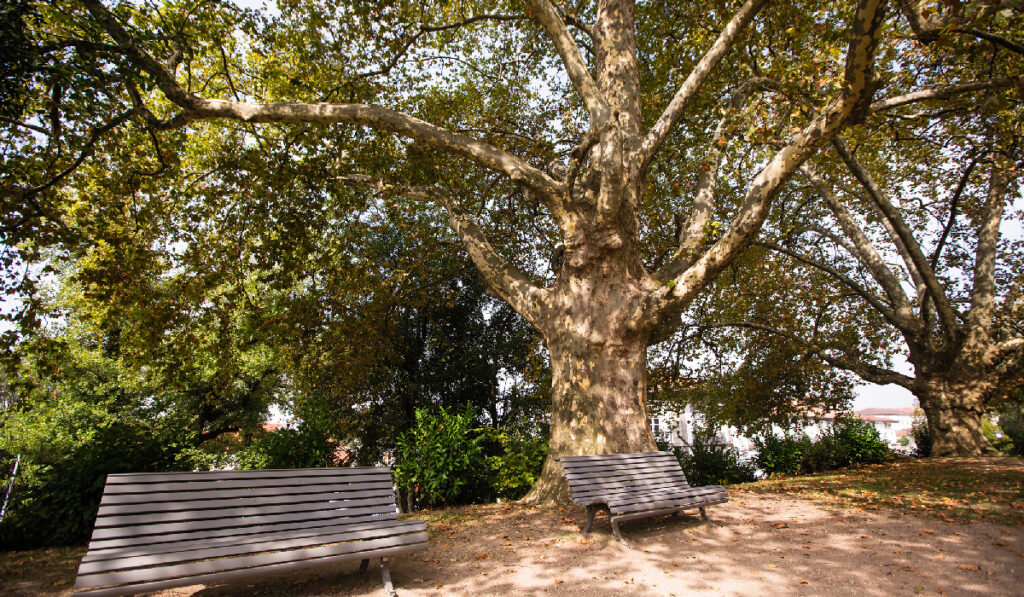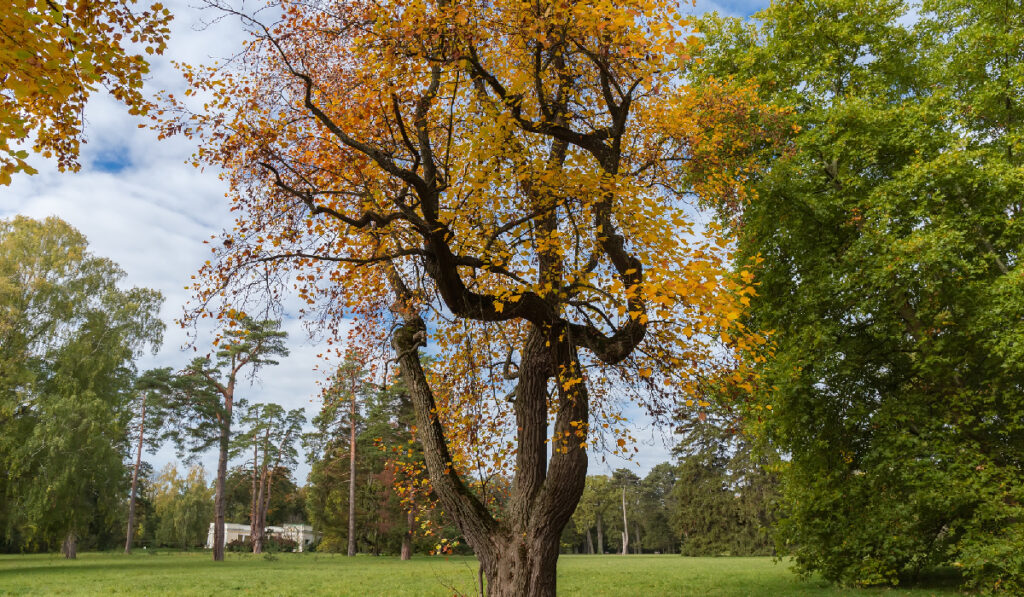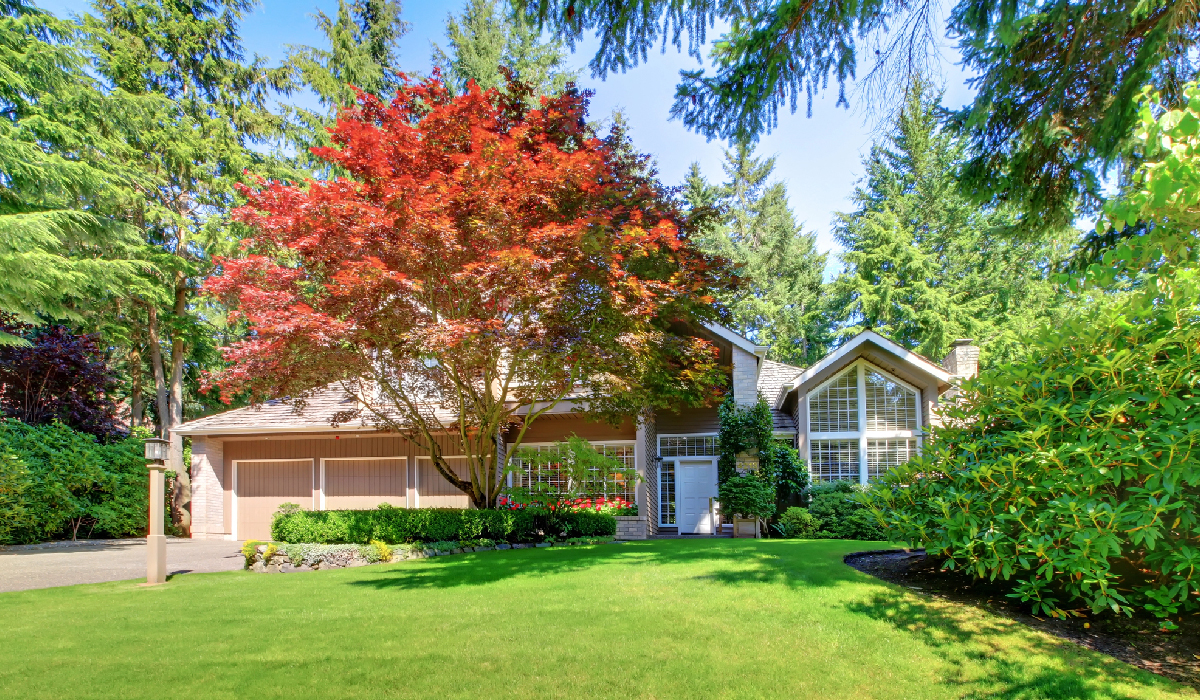Planting shade trees is one of the most effective and aesthetically pleasing ways to cool down your yard during the hot summer months. Not only do shade trees provide relief from the sweltering heat, but they also offer a multitude of other benefits, including energy savings, enhanced property value, and environmental benefits. In this comprehensive guide, we’ll explore the best shade trees to plant this summer, ensuring your yard stays cool and inviting.
Why Plant Shade Trees in Your Yard?
Energy Savings and Cost Efficiency
Shade trees can significantly reduce energy costs by lowering the temperature around your home. According to the U.S. Department of Energy, properly placed shade trees can reduce air conditioning needs by up to 30%. By blocking direct sunlight and providing a cooling canopy, shade trees help maintain a cooler environment, which translates into lower energy bills.
Enhanced Aesthetic Appeal
A well-landscaped yard with mature shade trees is not only beautiful but also increases property value. According to the Arbor Day Foundation, mature trees can add up to 10% to a property’s value. Trees add structure, color, and a sense of tranquility to your yard, making it a more enjoyable place to spend time.
Environmental Benefits
Shade trees play a crucial role in improving air quality and supporting local ecosystems. They absorb carbon dioxide and release oxygen, helping to mitigate the effects of climate change. Additionally, trees provide habitat for wildlife and contribute to soil health by preventing erosion and maintaining soil moisture.
Factors to Consider When Choosing Shade Trees
Climate and Hardiness Zones
Choosing the right shade tree for your yard starts with understanding your local climate and hardiness zone. The USDA Plant Hardiness Zone Map is a valuable resource that can help you determine which trees will thrive in your area. Selecting trees that are well-suited to your climate will ensure they grow strong and healthy.
Tree Size and Growth Rate
It’s essential to match the size and growth rate of the tree to the available space in your yard. Some trees, like the Red Maple, grow quickly and can reach towering heights, while others, such as the Weeping Willow, spread wide and provide extensive shade. Consider how the tree’s size and growth rate will impact your yard and any nearby structures.
Maintenance and Care Requirements
Different trees have varying maintenance needs. Some require regular pruning and are more susceptible to pests and diseases, while others are relatively low-maintenance. Understanding the care requirements of your chosen shade trees will help you plan for their long-term health and beauty.
5 Best Shade Trees to Plant This Summer
1. Red Maple (Acer rubrum)
The Red Maple is a popular choice for shade due to its fast growth rate and vibrant fall colors. This tree can grow up to 60 feet tall with a spread of 25-35 feet, making it ideal for providing extensive shade. The Red Maple thrives in a variety of soil types and is relatively low-maintenance.
Benefits:
- Fast-growing and provides quick shade
- Stunning fall foliage with red, orange, and yellow leaves
- Tolerates a wide range of soil conditions
Care Tips:
- Plant in full sun to partial shade
- Water regularly, especially during dry periods
- Prune in late winter to early spring
2. Oak (Quercus)

Oak trees are renowned for their strength, longevity, and stately appearance. There are several types of oak trees, including Red Oak and White Oak, each offering unique characteristics. Oak trees can grow between 50 to 80 feet tall and provide extensive shade with their broad canopies.
Benefits:
- Long-lived and highly durable
- Provides excellent shade coverage
- Supports local wildlife, including birds and squirrels
Care Tips:
- Plant in full sun
- Water deeply and infrequently to encourage deep root growth
- Prune to remove dead or weak branches
3. American Sycamore (Platanus occidentalis)

The American Sycamore is known for its distinctive bark, which peels away to reveal a patchwork of white, tan, and green. This fast-growing tree can reach heights of up to 100 feet, making it one of the largest shade trees available.
Benefits:
- Fast growth and large size provide quick and extensive shade
- Unique and attractive bark
- Tolerates urban pollution and compacted soil
Care Tips:
- Plant in full sun
- Water regularly, especially during the first few years
- Prune to shape and remove any dead wood
4. Tulip Tree (Liriodendron tulipifera)

The Tulip Tree, also known as the Yellow Poplar, is named for its tulip-shaped flowers that bloom in the spring. This tree can grow up to 90 feet tall and has a straight trunk with a symmetrical crown, making it a striking addition to any yard.
Benefits:
- Beautiful tulip-shaped flowers in the spring
- Rapid growth rate
- Provides deep shade with its broad canopy
Care Tips:
- Plant in full sun
- Ensure well-drained soil
- Water during dry spells and mulch to retain soil moisture
5. Weeping Willow (Salix babylonica)

The Weeping Willow is instantly recognizable with its graceful, drooping branches that create a serene and tranquil atmosphere. This tree grows quickly, reaching heights of up to 50 feet, and provides extensive shade with its wide spread.
Benefits:
- Fast-growing and provides quick shade
- Creates a peaceful, picturesque setting
- Tolerates wet soils and areas near water
Care Tips:
- Plant in full sun to partial shade
- Water regularly, especially during dry periods
- Prune to maintain shape and remove any weak branches
Planting and Caring for Your Shade Trees
Best Practices for Planting Shade Trees
Ideal Planting Time and Techniques:
- The best time to plant shade trees is in early spring or fall when temperatures are cooler and the tree can establish roots without stress.
- Dig a hole that is twice as wide and just as deep as the root ball of the tree. This provides ample space for the roots to spread out and establish.
- When planting, ensure that the root flare (where the roots meet the trunk) is at or slightly above ground level. This helps prevent root rot and allows the tree to breathe.
Soil Preparation and Planting Depth:
- Prepare the soil by mixing in compost or organic matter to improve drainage and provide nutrients.
- Place the tree in the hole and backfill with the amended soil, gently tamping it down to remove air pockets.
- Water thoroughly to help settle the soil and provide moisture to the newly planted tree.
Ongoing Care and Maintenance
Watering Schedules and Mulching:
- Newly planted trees need regular watering to establish a strong root system. Water deeply once or twice a week, ensuring the soil is moist but not waterlogged.
- Mulch around the base of the tree with a 2-3 inch layer of organic mulch. This helps retain soil moisture, regulate temperature, and prevent weeds.
Pruning and Pest Control:
- Prune young trees to shape them and remove any damaged or weak branches. This encourages healthy growth and prevents future structural issues.
- Regularly inspect your trees for signs of pests or diseases, such as discolored leaves, holes in the bark, or unusual growths. Treat any issues promptly to prevent them from spreading.
Additional Tips for a Cooler Yard
Strategic Tree Placement
Maximizing Shade Coverage:
- Plant shade trees on the south and west sides of your home to block the harshest sun rays and provide maximum cooling during the hottest parts of the day.
- Consider the mature size of the tree when planting to ensure it will provide adequate shade without interfering with structures or power lines.
Creating Natural Windbreaks:
- Planting trees and shrubs in rows can create natural windbreaks, reducing wind speeds and helping to maintain a cooler yard. This is especially effective in areas prone to strong winds.
Complementary Landscaping Ideas
Using Shrubs and Ground Cover for Added Cooling:
- Incorporate shrubs and ground cover plants around your shade trees to create additional layers of shade and cooling. Plants like hostas, ferns, and azaleas thrive in shaded areas and add beauty to your landscape.
- Consider using native plants that are well-adapted to your local climate and require less maintenance.
Incorporating Water Features and Garden Structures:
Adding Water Features:
- Installing a pond, fountain, or small waterfall in your yard can enhance the cooling effect provided by shade trees. Water features not only create a relaxing atmosphere with the sound of flowing water but also help lower temperatures through evaporative cooling.
- Consider placing water features near shaded areas to amplify the cooling effect and make the space more inviting during hot summer days.
Garden Structures:
- Incorporate garden structures such as pergolas, arbors, or trellises covered with climbing plants. These structures can provide additional shade and create intimate, cool spaces in your yard.
- Choose climbing plants that thrive in shaded conditions, such as clematis, ivy, or wisteria, to cover these structures and enhance their cooling benefits.
FAQs:
Q1: What are the best shade trees to plant for a cooler yard?
A: The best shade trees to plant this summer for a cooler yard are Red Maple, Oak, American Sycamore, Tulip Tree, and Weeping Willow.
Q2: How do shade trees help in reducing energy costs?
A: Shade trees reduce energy costs by providing natural cooling, which decreases the need for air conditioning. Their shade can lower temperatures around your home, reducing the heat load and energy consumption.
Q3: What factors should I consider when choosing a shade tree?
A: Consider the climate and hardiness zones, tree size and growth rate, and maintenance and care requirements. It’s important to choose trees that are well-suited to your local environment and available yard space.
Q4: When is the best time to plant shade trees?
A: The best time to plant shade trees is during the early spring or fall when temperatures are cooler, and trees can establish roots without the stress of extreme heat.
Q5: How can I ensure my shade trees thrive after planting?
A: Ensure your shade trees thrive by following proper planting techniques, such as preparing the soil and planting at the correct depth. Regular watering, mulching, pruning, and pest control are also crucial for their ongoing care.
Q6: Can shade trees improve the aesthetic appeal of my yard?
A: Yes, shade trees can significantly enhance the aesthetic appeal of your yard by adding natural beauty, structure, and seasonal color. They can also increase your property value.
Q7: What are the environmental benefits of planting shade trees?
A: Shade trees improve air quality by absorbing pollutants and producing oxygen. They also provide habitats for wildlife, reduce soil erosion, and help combat climate change by sequestering carbon dioxide.
Q8: How should I position shade trees for maximum cooling effect?
A: Position shade trees strategically around your home to provide maximum shade during the hottest parts of the day. Planting trees on the south and west sides of your home can block the harshest sun rays.
Q9: Are fast-growing shade trees better than slow-growing ones?
A: Fast-growing shade trees provide quicker benefits but may have shorter lifespans and require more maintenance. Slow-growing trees often live longer and can be more resilient. Choosing between them depends on your immediate and long-term needs.
Q10: Do I need to hire a professional to plant shade trees?
A: While you can plant shade trees yourself with proper knowledge and tools, hiring a professional ensures the trees are planted correctly and have the best chance of thriving. A professional can also provide valuable advice on tree selection and care.
Conclusion
Planting shade trees this summer is an excellent way to achieve a cooler and more inviting yard. The best shade trees to plant—including Red Maple, Oak, American Sycamore, Tulip Tree, and Weeping Willow—offer a range of benefits from rapid growth and extensive shade to beautiful seasonal colors and unique features. By considering factors like climate, tree size, and maintenance needs, you can select the perfect trees for your yard and ensure they thrive.
Remember to follow best practices for planting and ongoing care to help your shade trees grow strong and healthy. Strategic placement, combined with complementary landscaping ideas, will maximize the cooling benefits and enhance the beauty of your outdoor space.
By investing in shade trees and thoughtful landscaping, you’ll create a refreshing oasis that will be enjoyed for years to come. Start planting today and transform your yard into a cool, shaded retreat this summer!

